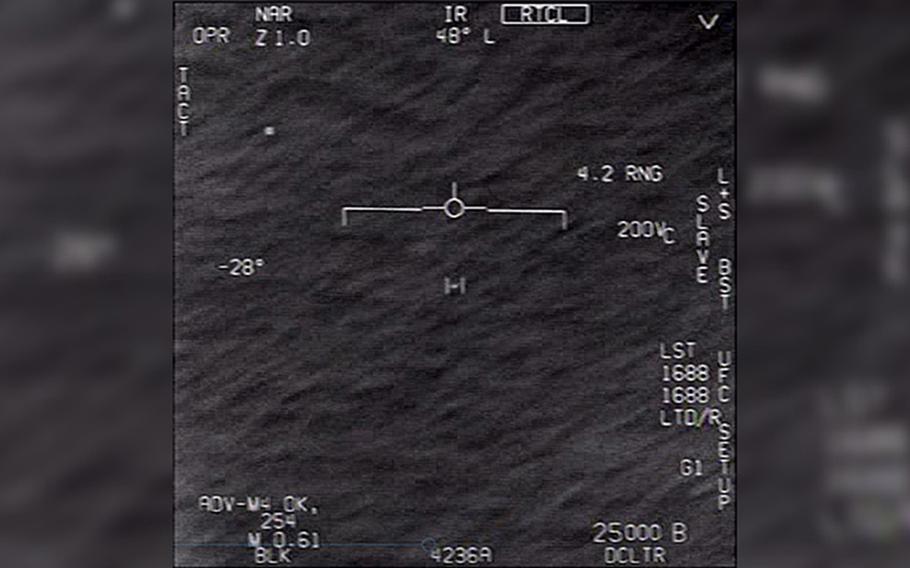
A still image from video recorded by a U.S. Navy aircraft shows a UFO off the coast of Florida in 2015. The Pentagon lacks a coordinated approach to track and report mysterious objects in the sky, according to an unclassified summary of a Defense Department Inspector General report released Jan. 25, 2024. (U.S. Navy)
The Defense Department’s handling of UFO sightings lacks coordination and could pose a security risk to both the military and the United States as a whole, according to the Pentagon’s internal watchdog agency.
Varying processes are used for collecting and analyzing reported sightings of what the Pentagon Inspector General calls unidentified anomalous phenomena, or UAP. An unclassified summary of the IG findings was released Thursday.
Collection and analysis of the reports have occurred largely without the input of regional military commands, which are responsible for detecting and deterring threats against the country, the inspector general said.
The Pentagon “has no overarching UAP policy and, as a result, it lacks assurance that national security and flight safety threats to the United States from UAP have been identified and mitigated,” the report said.
Efforts to address the sightings are currently confined to each service branch, it added.
Pilots and military personnel have reported strange phenomena in the sky for years. Many reported sightings are eventually deemed to be benign objects, but others remain unidentifiable and officials fear some of these could be spying tools used by U.S. adversaries.
The full report, containing classified sections, was delivered to Congress in August. It comes after lawmakers at a House panel hearing in July said the Pentagon was not being transparent about how it deals with UFO sightings.
Rep. Tim Burchett, R-Tenn., said at the time that the lack of transparency amounted to a “cover-up.” The Pentagon denied the claim.
Congress established the All-domain Anomaly Resolution Office in July 2022, in part to learn what high levels of government know about UFOs.
“Given the significant public interest ... we are releasing this unclassified summary to be as transparent as possible with the American people about our oversight work on this important issue,” the inspector general said in a Thursday statement released in conjunction with the report.
Among its recommendations is that various branches of the military integrate existing intelligence and better coordinate with regional commands. DOD offices largely agreed with or addressed the recommendations, the report said.